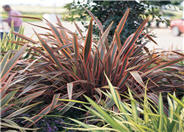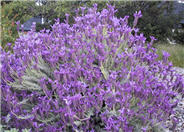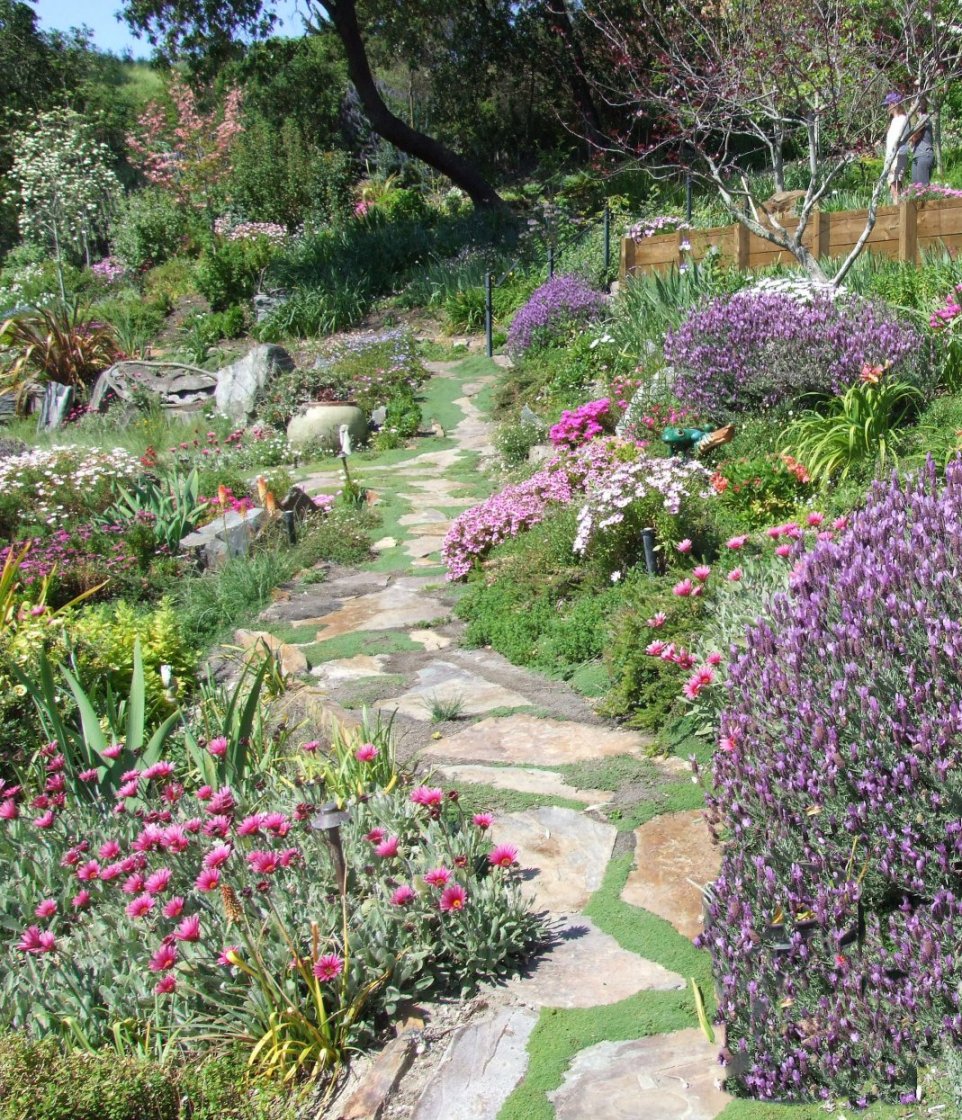
Common name:Pink Stripe Flax
Botanical name:Phormium 'Pink Stripe'
Phormium 'Pink Stripe' is an evergreen perennial. Big, dramatic plant composed of many swordlike, stiffly vertical leaves in a fan pattern. Flowers stems reach high above leaves, bearing clusters of 1-2 in. blossoms in dull red to yellow.

Common name:Spanish Lavender
Botanical name:Lavandula stoechas
This dense shrub grows 2-3 ft. tall with blue gray foliage and deep purple flowers that have large showy bracts near the top of the spikes. It is drought tolerant . - Cornflower Farms

Common name:Blue Star Creeper, Isotoma
Botanical name:Pratia pedunculata
Laurentia fluviatilis has bright green, nearly stemless, 1/4" leaves. In late spring and summer, these form a backdrop for equally tiny, star-shaped pale blue flowers.

Common name:Pink Champagne Marguerite
Botanical name:Chrysanthemum frutescens 'Pink Champagne
Chrysanthemum fru. is a perennial and an annual depending on the zone. The flowers are 1.5 to 2.5 in. and are pink. They do well in containers and need well-drained soil.

Common name:Purple Ice Plant
Botanical name:Drosanthemum hispidum
Gets larger than some to 2' and not as good as erosion control being that it is not a good root downer. Flowers are dark purple and nice.

Common name:Freeway Daisy, Trailing African Dai
Botanical name:Osteospermum fruticosum
This ground cover will grow 1-3' tall and has medium-size green leaves with purple or blue flowers that can bloom all year.

Common name:Blue Marguerite, Blue Felicia Daisy
Botanical name:Felicia amelloides
This shrubby perennial has oval leaves that are 1" in length and dark green in color. It produces a variety of bright blue 1 1/4" wide flowers almost continuously, those of which resemble daisies.

Common name:Bearded Iris
Botanical name:Iris Bearded Hybrids
This perennial will grow 1-3' tall and has medium-size blue/green leaves with wonderful flowers that come in a variety of colors.
| Designer: | Meandering Path |
Photographer: GardenSoft |
Soils and Compost:
Practice grass-cycling by leaving short grass clippings on lawns after mowing, so that nutrients and organic matter are returned to the soil.
Water Saving Tip:
Water trees and shrubs by deep-soaking occasionally with low-volume irrigation equipment (drip, micro-sprays, or bubblers) to promote healthy, deep rooting.
Integrated Pest Management:
Remove irrigation water and fertilizer from areas where you don't want weeds to grow.

